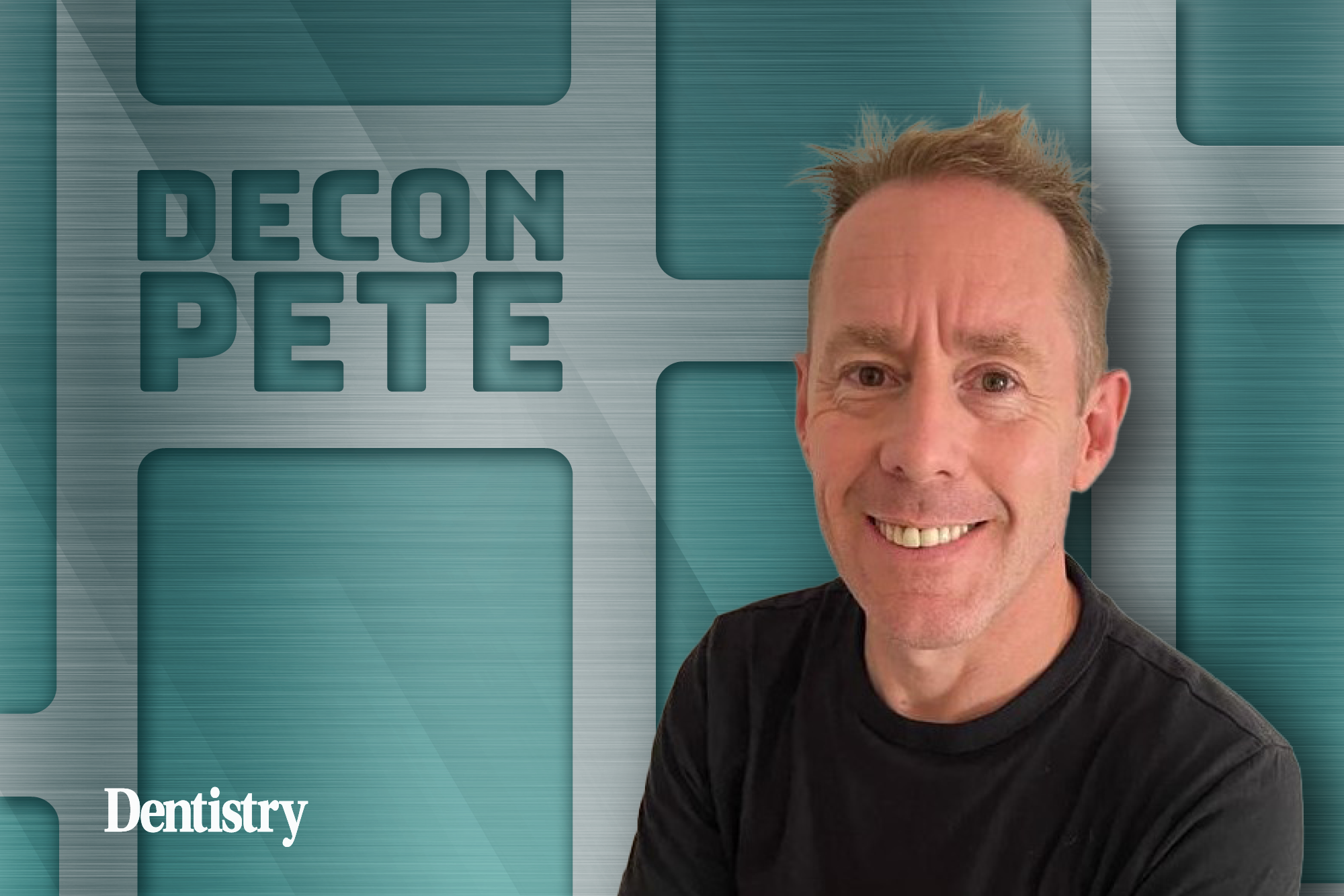
This month, Decon Pete discusses what every practice needs to know about the safer sharps regulation and why it’s critical to follow it.
I get asked a lot of questions about a variety of different subjects of infection prevention and control and decontamination. With this in mind, I thought I would start a series of articles outlining these questions.
The first question I thought I would cover is a recap of the Health and Safety (Sharp Instruments in Healthcare) Regulations 2013 and the main implications of this on dental practices.
What is the guidance?
The 2013 safer sharps regulation came in to effect on 11 May 2013 with new guidance produced by the Health and Safety Executive (HSE).
The guidance outlines: ‘All employers are required under existing health and safety laws to ensure that risks from sharps injuries are adequately assessed and appropriate control measures are in place.
‘The Sharps Regulations builds on the existing law and provides specific detail on requirements that must be taken by healthcare employers and their contractors.’
The aim of the regulation is to reduce the unnecessary risks associated with needle stick injuries to all employers and employees within healthcare settings. The guidance further outlines that, where there is no possible avoidance in the use of medical sharps…
‘The employer must substitute traditional, unprotected medical sharps with a “safer sharp” where it is reasonably practicable to do so. The term “safer sharp” means medical sharps that incorporate features or mechanisms to prevent or minimise the risk of accidental injury.
‘For example, a range of syringes and needles are now available with a shield or cover that slides or pivots to cover the needle after use.’
Important factors
The guidance also recommends considering the following factors:
- The device must not compromise patient care
- The reliability of the device
- The care-giver should be able to maintain appropriate control over the procedure
- Other safety hazards or sources of blood exposure that use of the device may introduce
- Ease of use (taking into account the existing clinical practices commonly in use by the relevant health professionals – but not assuming custom and practice is safest).
The guidance goes on to highlight the risks associated with recapping of the needles and encourages that recapping must not be carried out unless a risk assessment has identified that recapping is itself required to reduce the risk.
It says: ‘Injuries can occur after a needle has been used if the healthcare worker holds the needle in one hand and attempts to place a cap on the needle with the other hand (so-called two-handed recapping).
‘Needles must not be recapped after use unless the employer’s risk assessment has identified that recapping is itself required to prevent a risk (eg to reduce the risk of contamination of sterile preparations).
‘In these limited cases, appropriate devices to control the risk of injury to employees must be provided. For example, needle-blocks can be used to remove and hold the needle cap and so allow safe one-handed recapping.’
How should you assess risks?
Whichever systems are being used in your practice, a comprehensive risk assessment must be carried out and reviewed on an annual basis or whenever a system is changed. The risk assessment should outline the following topics and findings:
- Risk identified: Use of anaesthetic needles, dismantling of matrix bands, discarding of sharps, transporting of sharps etc
- Person at risk: This would be the member of staff or patient that is at risk from any of the identified risks
- Indicative precautions: Outlining of the precautions that are to be taken to reduce the risks to the person – i.e after use, sharps should be discarded by the clinician with minimal handling into the yellow sharps bin
- Risk level: Place a level of importance to the risks identified – low/medium/high
- Further action required: Outline what further action is required to reduce the risks and implement the precautions. This could be training, location of sharps bins etc.
As there are a vast array of potential risks associated with sharps in dentistry, it is important that every precaution is taken to reduce the risk to staff, patients and visitors coming into your high risk areas.
If you need any help or support with anything outlined in these article, please do not hesitate to get in touch with me by email at [email protected] or visit the website www.deconpete.co.uk.
Catch up on previous Decon Pete columns:
- Updates to waste management legislation
- Hints and tips for purchasing washer disinfectors
- Hints and tips for purchasing benchtop autoclaves
- Hints and tips for purchasing ultrasonic baths
- Handpiece care and maintenance.
Follow Dentistry.co.uk on Instagram to keep up with all the latest dental news and trends.


